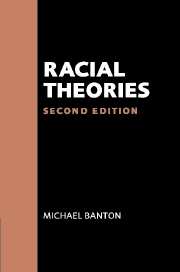2 - Race as lineage
Published online by Cambridge University Press: 09 November 2009
Summary
The word ‘race’ entered the English language in 1508 in the poem The Dance of the Sevin Deidly Sins by the Scotsman, William Dunbar. Among those who followed the sin of Envy he listed:
And flattens in to menis facis;
And bakbyttaris of sindry racis,
To ley that had delyte.
It was introduced into an intellectual world in which the Bible was accepted as the authority on human affairs. All humans were descended from Adam and Eve. To understand what had happened to the various sections of humanity subsequently it was necessary to trace their histories back genealogically through the links in the ancestral chain. People were differentiated because they had migrated to different regions and because God had guided the course of events. He had punished some, as by putting the mark upon Cain and by permitting the curse upon Ham and his descendants. Different groups had doubtless been dispersed after the Flood and after the fall of the Tower of Babel. Yet the Bible was obscure in places and its answers seemed to be hidden, so it had to be studied with intelligence and faith. How was it possible to reconcile stories of people in distant lands with a Bible that made no mention of these lands? One possible solution was to maintain that Adam was the ancestor of the Jews alone, and that other peoples' nature and history could be traced back to separate ancestors. Such an explanation, later called that of polygenesis, was first advanced by Paracelsus in 1520.
- Type
- Chapter
- Information
- Racial Theories , pp. 17 - 43Publisher: Cambridge University PressPrint publication year: 1998

